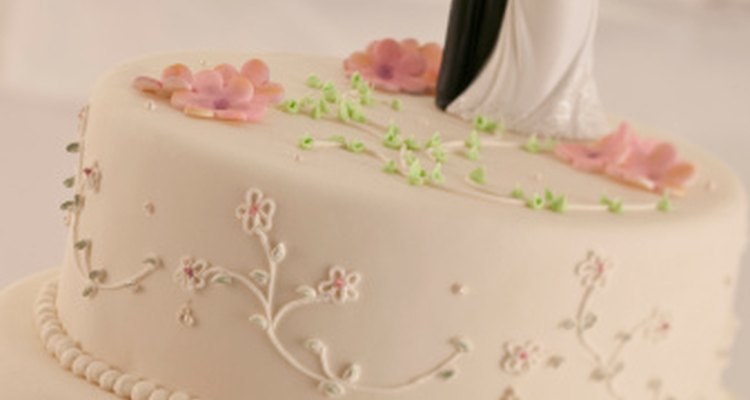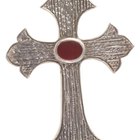
Handfasting, or the custom of binding a couple’s hands together during a wedding ceremony, has been practiced in a number of ways, in different cultures, throughout history. Handfasting cords can be made of nearly any material, such as silk ribbons, soft vines, knitted bands, woven wire or hemp cord, and can be braided, twisted or macramed together. Whatever the material, the symbolism remains the same: physically connecting a couple during a ceremony to represent their spiritual joining into a new unit and family.
Position the couple so they are facing one another.
Instruct the couple to clasp their hands during or after the vows, as desired.
Wrap the handfasting cords around both the couples' wrists and hands. You can wrap the cord once around each, or choose a number that is meaninful to the couple. Do not wrap the cords tightly! It is important the couple can slip their hands out of the cord after the ceremony.
Tie a strong knot connecting the two ends of the cord, between the couples' hands.
Allow the couple to slip off the handfasting cord, keeping the ends knotted, after the ceremony.
Related Articles

How to Use a Veil & Cord in a Wedding

How to Tie a Love Knot for Wedding ...

The Meaning of Wedding Bands

Ribbon Meanings for a Handfasting ...

How to Make a Wedding Core Lasso

The Meaning of Exchanging Wedding Rings

Can a Notary Republic Marry People?

Commitment Ceremony Vs. Wedding Ceremony

Mexican Catholic Wedding Traditions

What Is the Meaning of Wedding Doves?

How to Curve a New Era Cap

What Is the Difference Between a ...

What Is the Benediction in a Wedding ...

How to Fill Out a Marriage Certificate

Religious Ideas for 50th Wedding ...

Romanian Orthodox Wedding Traditions

What Are the Duties of a Godparent?

The People Involved in a Wedding

How to Renew Vows After a Separation

How to Take the Ball Off of a Lip Ring
References
Writer Bio
A writer and professional lab assistant based in Seattle, Kate Bruscke has been writing professionally about health care and technology since 1998. Her freelance clients include "The Seattle Times," KGB.com, Reading Local: Seattle, Nordstrom and MSN/Microsoft. Bruscke holds a Master of Fine Arts from The School of the Art Institute of Chicago.
Photo Credits
Comstock Images/Comstock/Getty Images